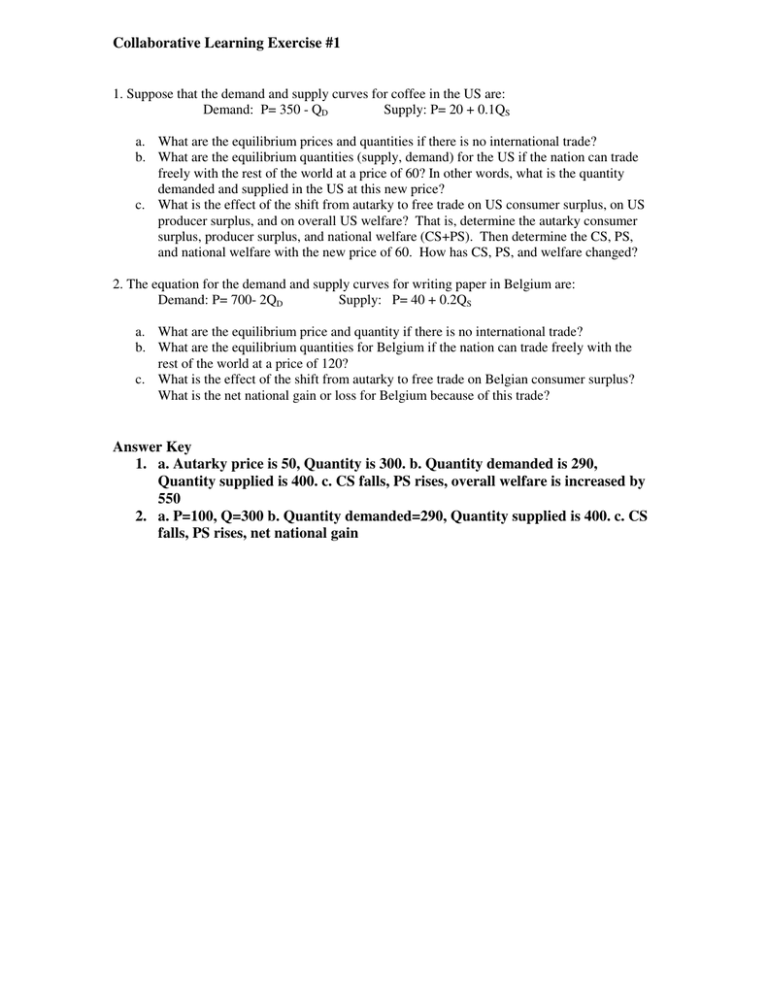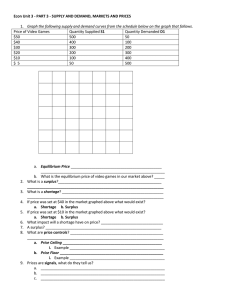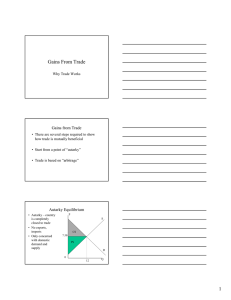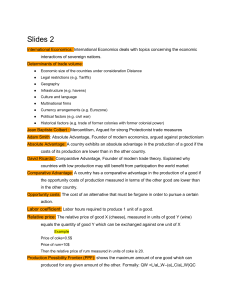Collaborative Learning Exercise #1
advertisement

Collaborative Learning Exercise #1 1. Suppose that the demand and supply curves for coffee in the US are: Demand: P= 350 - QD Supply: P= 20 + 0.1QS a. What are the equilibrium prices and quantities if there is no international trade? b. What are the equilibrium quantities (supply, demand) for the US if the nation can trade freely with the rest of the world at a price of 60? In other words, what is the quantity demanded and supplied in the US at this new price? c. What is the effect of the shift from autarky to free trade on US consumer surplus, on US producer surplus, and on overall US welfare? That is, determine the autarky consumer surplus, producer surplus, and national welfare (CS+PS). Then determine the CS, PS, and national welfare with the new price of 60. How has CS, PS, and welfare changed? 2. The equation for the demand and supply curves for writing paper in Belgium are: Demand: P= 700- 2QD Supply: P= 40 + 0.2QS a. What are the equilibrium price and quantity if there is no international trade? b. What are the equilibrium quantities for Belgium if the nation can trade freely with the rest of the world at a price of 120? c. What is the effect of the shift from autarky to free trade on Belgian consumer surplus? What is the net national gain or loss for Belgium because of this trade? Answer Key 1. a. Autarky price is 50, Quantity is 300. b. Quantity demanded is 290, Quantity supplied is 400. c. CS falls, PS rises, overall welfare is increased by 550 2. a. P=100, Q=300 b. Quantity demanded=290, Quantity supplied is 400. c. CS falls, PS rises, net national gain









